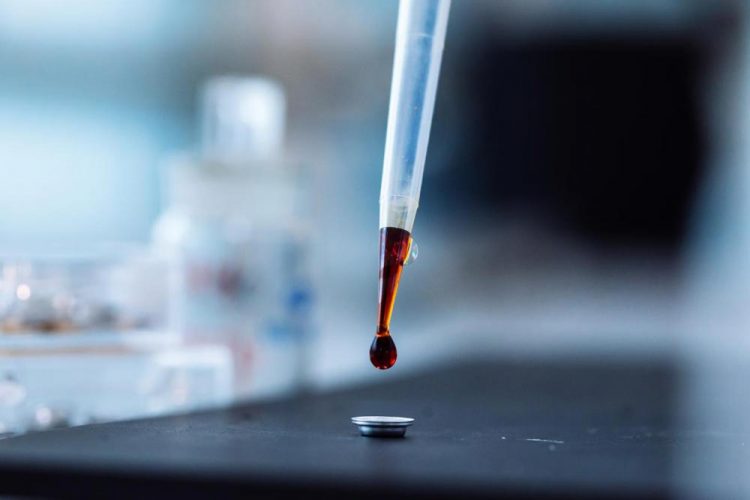Newly created magnets are cheaper, more effective and 'smarter'

Ferromagnets, or more precisely, magnets -- are extremely demanded materials in modern electronics. The magnets present in almost every device -- TVs, computers, fridges, cars, smartphones, etc. But it is necessary to remember, that ferromagnetic alloys are made of rare-earth elements (REE) that is way an effective and high-powered magnet is an expensive thing. Credit: Immanuel Kant Baltic Federal University
Ferromagnets, or more precisely, magnets – are extremely demanded materials in modern electronics. The magnets present in almost every device – TVs, computers, fridges, cars, smartphones, etc. But it is necessary to remember, that ferromagnetic alloys are made of rare-earth elements (REE) that is way an effective and high-powered magnet is an expensive thing. Today scientists are facing a challenge of making cheaper magnets without the REE or with the minimal amount of these elements.
It is also known that atoms of light elements like boron, nitrogen, and carbon are a part of the most high-powered magnets as well.
Intermetallics scientific journal has recently published a unique research of a group of scientists. Among the group was an IKBFU Institute of Physics, Mathematics and Information Technology scientist Mikhail Paukov.
The study is aimed at solving the goals of the Federal project “Development of advanced infrastructure for research and development in the Russian Federation” of the National project “Science”.
Mikhail Paukov said:
“My goal was to hydrogenate the ferromagnetic alloy consisting of three metals – neodymium, manganese, and germanium. To put it simply: I was to insert hydrogen atoms into the crystal structure (in-between its knots). Some compounds require only one hydrogen atom per unit; some require a few of them. But anyway hydrogenation may seriously alter the original substance's properties”.
According to Mikhail, NdMnGe alloy may only be inserted with a single hydrogen atom per unit, but the compound resulted has gradually changed its characteristics and has shown anti-ferromagnetic properties. The compound stopped being a magnet.
The scientist said:
Now, at this point, we have no clear understanding of how to practically apply the data received. Maybe the materials will be possible to use as magnets for hydrogen-containing medium to control the amount of hydrogen in them. For now, our research is mostly “purely fundamental”.
But there can be no doubt that the data gathering on ferromagnetic alloys will lead to a breakthrough sooner or later. And will provide mankind with high-powered, “smart” and cheap magnets. And Mikhail Paukov and colleagues' research brings this moment closer.
Media Contact
All latest news from the category: Power and Electrical Engineering
This topic covers issues related to energy generation, conversion, transportation and consumption and how the industry is addressing the challenge of energy efficiency in general.
innovations-report provides in-depth and informative reports and articles on subjects ranging from wind energy, fuel cell technology, solar energy, geothermal energy, petroleum, gas, nuclear engineering, alternative energy and energy efficiency to fusion, hydrogen and superconductor technologies.
Newest articles

Superradiant atoms could push the boundaries of how precisely time can be measured
Superradiant atoms can help us measure time more precisely than ever. In a new study, researchers from the University of Copenhagen present a new method for measuring the time interval,…

Ion thermoelectric conversion devices for near room temperature
The electrode sheet of the thermoelectric device consists of ionic hydrogel, which is sandwiched between the electrodes to form, and the Prussian blue on the electrode undergoes a redox reaction…

Zap Energy achieves 37-million-degree temperatures in a compact device
New publication reports record electron temperatures for a small-scale, sheared-flow-stabilized Z-pinch fusion device. In the nine decades since humans first produced fusion reactions, only a few fusion technologies have demonstrated…





















